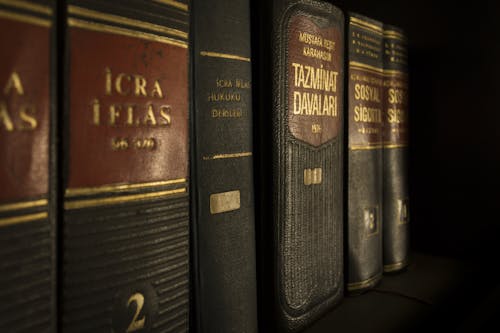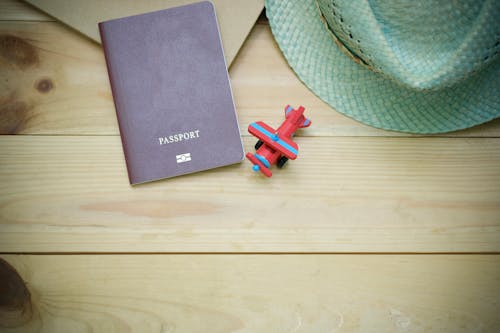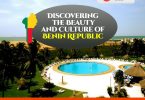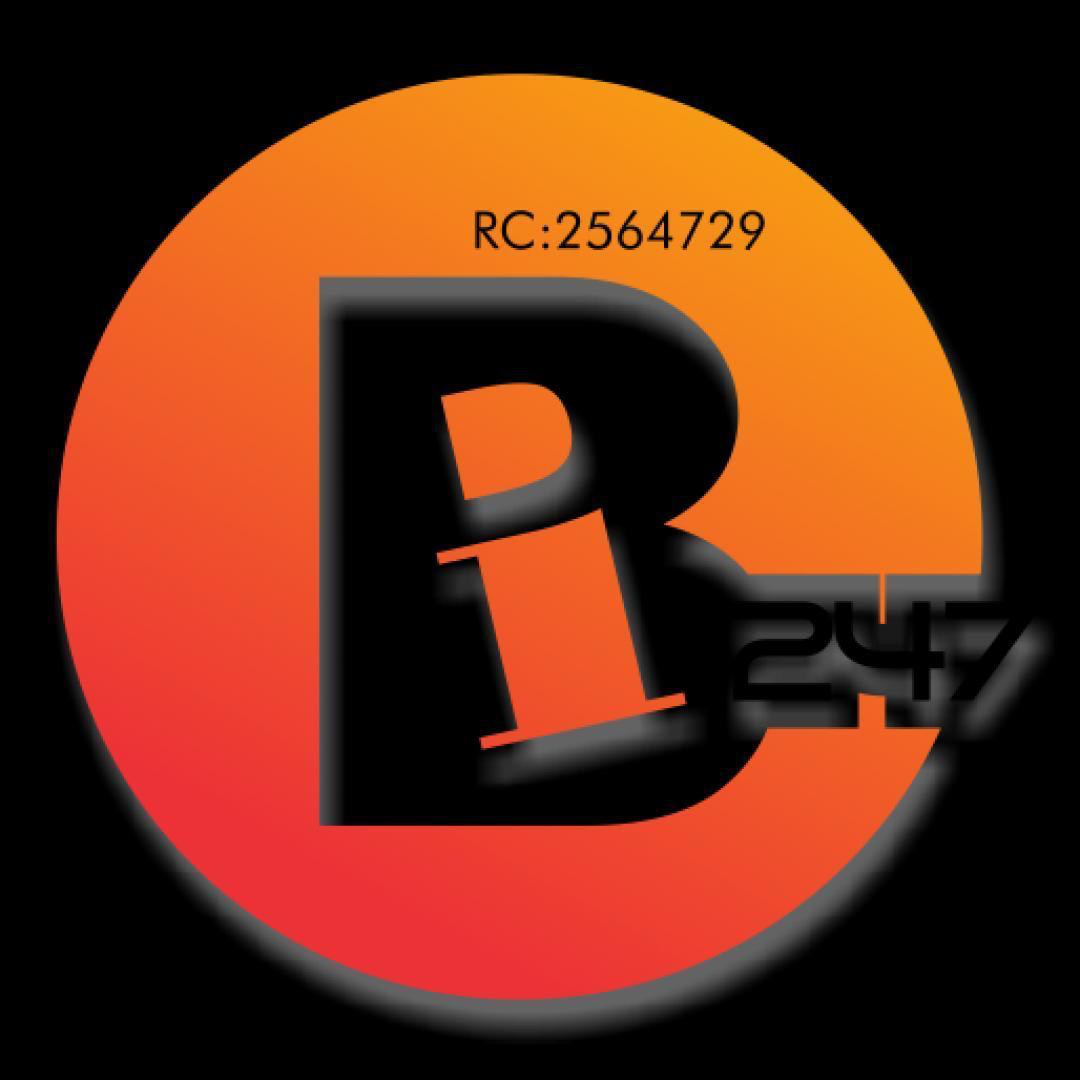FACTS ABOUT BENIN REPUBLIC YOU MIGHT NOT HAVE KNOWN
Geography Facts about Benin Republic
Benin Republic Location

Benin Republic is located in West Africa, covering 112,622 sq. of land. Kilometre. And represents a long stretch of hand perpendicular to the Guinean Gulf Coast. It is bordered by Burkina Faso and the Republic of Niger to the North, the Federal Republic of Nigeria to the East, and the Republic of Togo to the West. With a coastline of 124 kilometers long, it stretches some 672 kilometers north to south while at the obvious point, its breath extends 324 kilometres. The Size of Portugal is above two-thirds.
Benin Republic Topography

Benin Republic can be divided into five natural regions: a coastal area, low, sandy and about 2 to 5 kilometers wide, bounded by lagoons; a plateau area called “La terre de barre” made of iron clay cut with marshy dips; a plateau of silica clayey with wooded savannah extending north of Abomey to the foothills of the Atakora hills; Niger plains that are extensive fertile areas of silica-clayey.
Vegetation
In the center the forest thins out considerably and gives way to the grassland. Cultivated crops elsewhere predominate, including lower Benin ‘s immense palm groves and coconut plantations along the 124 kilometer long coastline and along the lagoons.
Climatology
Benin Republic features unusually dry conditions. This is mainly due to two extremely important factors. First, the coastal situation that is rather well protected from the western winds; second, the western and northwestern Atakora Barrier that decreases the amount of rainfall.
The country’s bulk is under the influence of tropical transitional conditions. Rainfall is not as abundant as it is found in areas of the same latitude, thus creating tropical conditions known as the BENIN variant. These conditions are characterized by a dry season from November to early April and a rainy season from the latter part of April until October.
The southern portion of the Republic of Benin, i.e. the coastal zone, is under the influence of a Northern transitional equatorial climate characterized by a long dry season from November until the end of March, a first rainy season from April to July, a small dry season in August and a second rainy season in September and October.
The country’s northern portion undergoes a true tropical climate. A long dry winter season can be observed in the summer, with a long rainy season.
The mean temperature ranges from 77oF to 82oF (25o-28oC).
The best time to visit the Southern area is from December to March and July / August, while it is between December and April to visit the Northern part of the country.
Communications

Benin ‘s geographical setting serves to integrate the region and provides direct access by water, rail, airlines, and railways to bordering states.
Five-seaters travel between Cotonou and Lome, Cotonou and Lagos to name the nearest other capital cities, while bus and lorry services such as Cotonou-Parakou, Parakou-Kandi, Parakou-Malanville, Parakou-Djougou are available for long-distance travel.
Roads: 1,000 km or bitumenized roads will cover 8,000 km
Railways: 570 Km in joint venture with the NIGER Republic.
Airport: Cotonou’s main airport features many foreign airlines.
Port: International harbor in Cotonou, with modern facilities.
Telecommunications: Infrastructures operate more than 6,000 lines with direct outside world contact.
Most towns and localities offer a full range of postal services. Telex facilities and fax facilities are in Cotonou.
The Benin Republic Constitution at a glance

A multi-party system country
President/ Head of State/ Head of Government
A one-man-one-vote suffrage to elect the President / Government Head who may belong to a Party. His term of office is five ( 5) years, and is only renewed once. For at least ten ( 10) years he should have been of Beninese nationality. Presidential vacancy (resignation, death …) is filled by National Assembly Speaker. The new Head of State shall be elected within 40 (40) days. The President / Head of State / Government in the National Assembly Hall addresses the nation on the state of the nation once a year
National Assembly
A one-man-one vote suffrage to elect parliamentarians (MPs). His four year term in office is renewable. There is one MP with a population of 70,000. His successor elected within fifteen ( 15 ) days when the House is in session or at an immediate meeting held in accordance with its Rules of Procedure shall fill the vacancy (resignation, death …) at the speakership. An MP’s vacancy is filled in the same way by his substitute, who is also elected. Two regular sessions begin within the first quarter of April and the second quarter of October, respectively. Could not exceed three ( 3) months in each session. It is decided by a simple majority.
The Benin Republic Flag

For the first time, on the independence day 1 August 1960, the National Flag was formally hoisted to replace the French Flag.
It has green, red and yellow colours.
The green denotes hope for renewal as explained in the second verse of the National Anthem, the red evokes the courage of the ancestors while the yellow calls to mind the richest treasures of the country.
But when the country went red in 1975 after a military coup on 26 October 1972, the then one-party regime decided to change the National Flag with its Marxist-Leninist ideology. It became a plain green flag on its upper left part, with a red star.
Demography and Languages
Demography
The population of BENIN is estimated at 4,500,000 inhabitants largely concentrated in the Southern coastal region near the major port city of Cotonou (450,000 inhabitants), the head town of the Atlantic Department, the capital city of Porto Novo (200,000 inhabitants) in the OUEME Department and the “Royal City” of Abomey (80,000 inhabitants) in the Central Department of ZOU. The annual growth rate is 3.1%. Other major towns are Ouidah, Allada, Abomey, Grand Popo, Lokossa, Save, Savalou, Parakou, Djougou, Malanville, Kandi, Natitingou.
Benin Republic Languages
Benin Republic Mina, Bariba and Dendi are the other important languages. French is the official language. Beside the French language, English is necessarily one of the two foreign languages taught in secondary schools.
Greetings in Fon – Good morning: AH-FON Ghan-Jee-Ah
– Good evening: Kou Do Bah Dah
– How are you: Ah-Doh Ghan-Jee-Ah
– Thank you: Ah-Wah-Nou
– Good bye: OH-Dah-Boh
Languages spoken:
The ATLANTIC “department”
– Fon, Alada, Ayizo, Seto, Tofin, Toli.
The ATAKORA “department”
– Basila, Cabrai, Dendi, Dompago, Dyerma, Fulfulde, Gourmantche, Kotokoli, Mossi, Natember; others are ouinzi-ouingi, Peul, Pila, Somba, Waama, Ditamari.
The BORGU “department”
– Bargu, Bariba, Bouko, Dendi; others are Dyerma, Fulfulde, Peul, Niendi.
The MONO “department”
– Adja, Guin, Mina, Nago; others are Popo, Saxwe, Waci, Xweda, Xwela.
The OUEME “department” – Ayizo, Gun, Holi, Idaca, Ife; others are Nago, Weme, Yoruba. The Zou “department” – Fon, Idaca, Ife, Mahi; others are Nago, Seto.
Places of Interest in Benin Republic
Ouidah:
Spelt “WHYDAH” in history books written in English, it is the “Museum City”. It is evocative of European penetration with its ancient Portuguese, English, Danish and French trading posts or strongholds. There can be seen the remains of the ancient port from which slaves were boarded and shipped to the Americas.
Abomey:
Referred to as the “Royal City”, it is the capital of Dan-Home, the ancient Kingdom. It has one of the most impressive museums of Africa. Its artists and craftsmen, be they weavers, jewelers, woodcarvers, iron and brass workers are famous far beyond the boundaries of the Republic of BENIN.
Allada:
It is the city, the cradle of “voodoos” in vogue in the Americas, namely in Brazil, West Indies, the Caribbean countries.
Porto Novo:
The “City with three Names” (Porto Novo,Hogbonou,Adjatche) . It is Benin’s administrative capital, right in the middle of the Yoruba land.
Nikki:
The historic capital of the Baatonu people.
Natitiogou:
Its castle-type “TATA-Sombas” and the traditional huts of the Tanekas and other tribes in the North where there are the richly varied fauna of the National Parks of Pendjari and “W”.
Ganvie:
AFRICA’s unique floating villages built on stilts. A population of several thousand. Motorboats or dugouts are available for the trips across the lake to the Ganvie. During the trip, there are Akadjas made of stakes and bushes in the shape of open circles or triangles driven into the bed of the plantless Lake. Seeking shelter among the foliage, the fish can thus be easily caught or kept for breeding.
Visa Requirements

1/ Two (2) application forms in legible writing.
2/ Two (2) passport size photos.
3/ International certificate of vaccination (yellow fever and cholera).
4/ Visa is issued for fifteen (15) days: Entry and transit within 3 months. Extensions may be obtained at the Immigration Office.
5/ A $ 20.00 (twenty dollars) fee for each applicant (cash, money order of certified cheque only. No personal cheque please.)
6/ A letter of guarantee from employer of travel agency or Xerox of round trip ticket or a Bank letter of guarantee.
– Join your passport to the forms.
– Please allow 48 hours for issuance of visa.
– Passport must be valid for at least six (6) months and if it is to be sent back by mail, please enclose self addressed certified envelope or an express mail envelope.
History
It can be remembered that Benin, former Dahomey, is perhaps the “most beaten track of any Africa’s Europeans.” Benin ‘s history is a succession of Kingdoms. France was granted permission to erect a port at Ouidah in 1704, and the Portuguese founded Porto Novo in 1752. The territory was named the “Colony of Dahomey and its dependencies” by decree on 22 June 1894 and was granted autonomy which it retained until 18 October 1904 when it became part of French West Africa.
The Republic was proclaimed on 4 December 1958. On August 1, 1960, Dahomey became independent, and is a member of the United Nations. . In other words, on November 30, 1975 Dahomey was under a centrally controlled government and eventually became the People’s Republic of Benin. At the National Conference held in Cotonou (February 19-28, 1990) and at which all walks of life were represented, fundamental decisions were taken, namely:
– abolition of Marxist ideology as the State philosophy.
– the reversion to the genuine flag.
– the reversion to the multi party system.
– the dissolution of all one-party structures.
– the release of all political detainees and prisoners.
– the respect of all Human Rights.
Coat of Arms
It is an escutcheon with: – in the first quarter, a gold Somba castle.
– in the second quarter in silver, the Star of Benin painted to the life, that is to say an eight azure point cross with, at its angle, silver radiuses and sand in abyss.
– in the third quarter, a sinople silver palmtree laden with heralds.
– in the fourth quarter, a ship evocative of European penetration into the Country.
Supporters: Two gold brindled panthers.
Crest: Two horns full of sand with maize in the ear.
Motto: Fraternity, Justice, Labor sandwritten on a lancepennon.
Industry & Trade
Only a small percentage of the gross domestic product represents industry. The fisheries sector only meets local consumption, as does the textile industry. Palm processing facility needs improvement; Negeria jointly owns a sugar complex and a cement factory. Breweries, piece of soap … Meet just local demand. However, the Possotome village is known for its mineral water which is internationally recognized. Besides the calcareous quarry found at ONIGBOLO, gold deposits, phosphates, iron ore, marble, clay … Are still to be explored. Development of off-shore fields is underway at SEME and elsewhere. A hydroelectric power on the river Mono (the NANGBETO dam) has just been completed in Benin / Togo. There are attractive industrial projects, and some of them have feasibility studies. Benin ‘s investment code has been revised to insert more incentives for investors, among other things. Benin is the natural gateway to Togo and Nigeria, and to countries that are landlocked like Burkina Faso, Niger and Mali.
Banks, Working Time, Public Holidays
Banks
– Central Bank of West Africa P.O. Box 325 Cotonou
– Bank of Africa
– Financial Bank
– International Bank of Benin (B.I.B.)
The currency is the CFA franc divided into 100 centimes; the parity with the French franc is fixed:
1 FF = 50 CFA francs.
Working Time
Business hours
Monday – Friday: 8a.m. to 12:30 a.m
3:30 p.m. to 7 p.m.
Saturday: 9 a.m. to 1 p.m.
Government
Monday – Friday: 8 a.m. to 12:30 3 p.m.
3 p.m. to 6:30 p.m.
Public Holidays
January 1: New Year’s Day
Easter Monday
Ascension Day
May 1: May Day
Whitmonday
August 1: National Day
August 15: Assumption Day
November 1: All Saints’ Day
December 25: Christmas Day
Ramadan
Ad-el-FlTR
Maouloud
The details regarding Muslim Holidays are but approximative since they are observed following the sightings of the moon.
Useful Links
- Places of attraction to visit in Benin Republic
- FASTEST AND MOST EFFECTIVE WAY TO WORK IN CANADA AS A NIGERIAN
- THREE SURE WAYS TO GET AN EUROPEAN CITIZENSHIP
- ANDORRA: Visa, Education, Work Permit And Living Life
- LIST OF SOME ACCREDITED UNIVERSITIES IN COTONOU BENIN REPUBLIC
- 2020 Benin Republic Universities Application Form
- 2020 Admission Requirements and Courses for Fresher and Transfer Student to study in Republic of Benin
- Top Ten (10) astounding Universities dominated by Nigerians in Cotonou Republic of Benin 2020
- LEADPRENEUR ACADEMY Distance Learning
- How to apply for Canada Visa online









 Protected by Patchstack
Protected by Patchstack